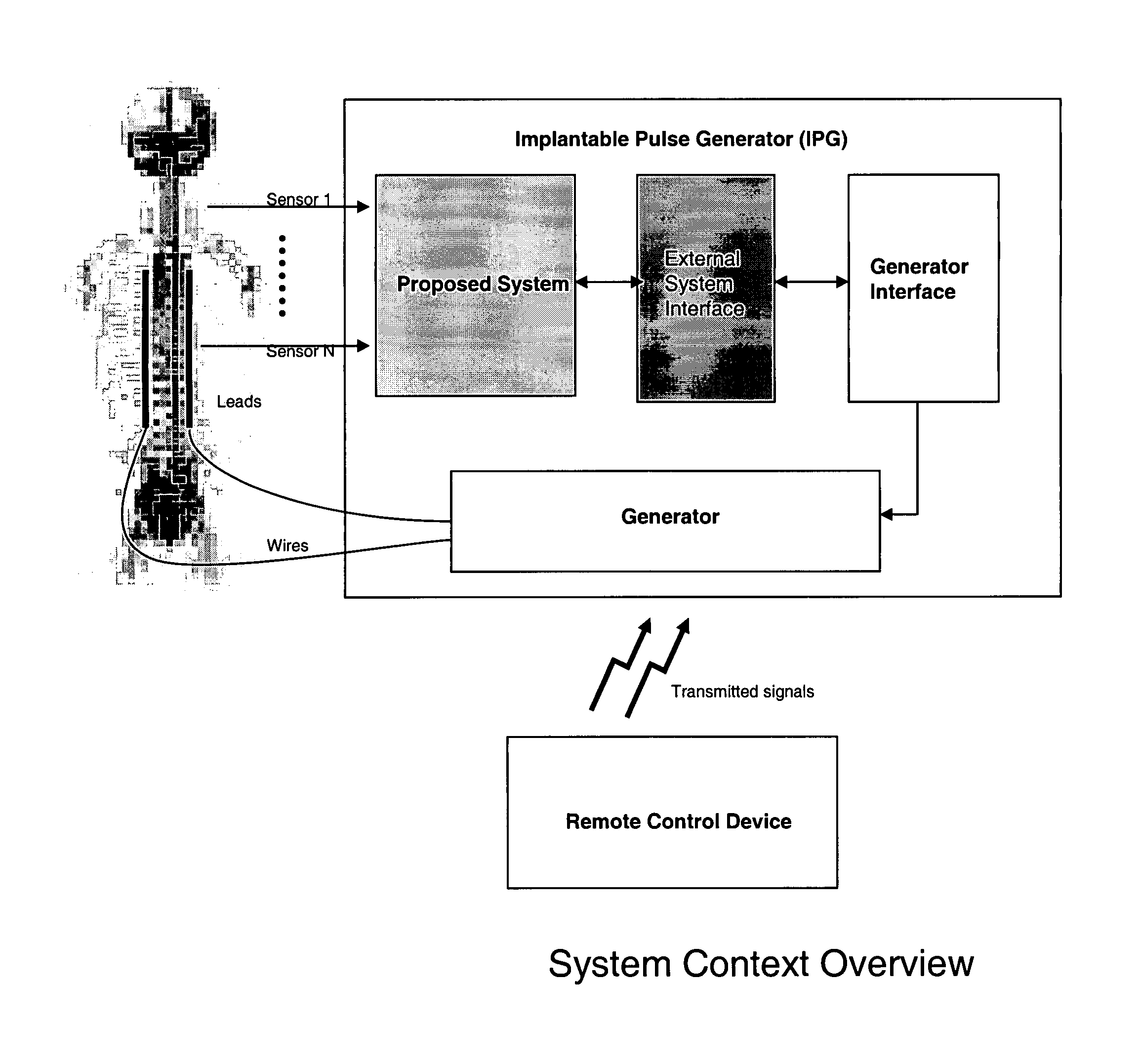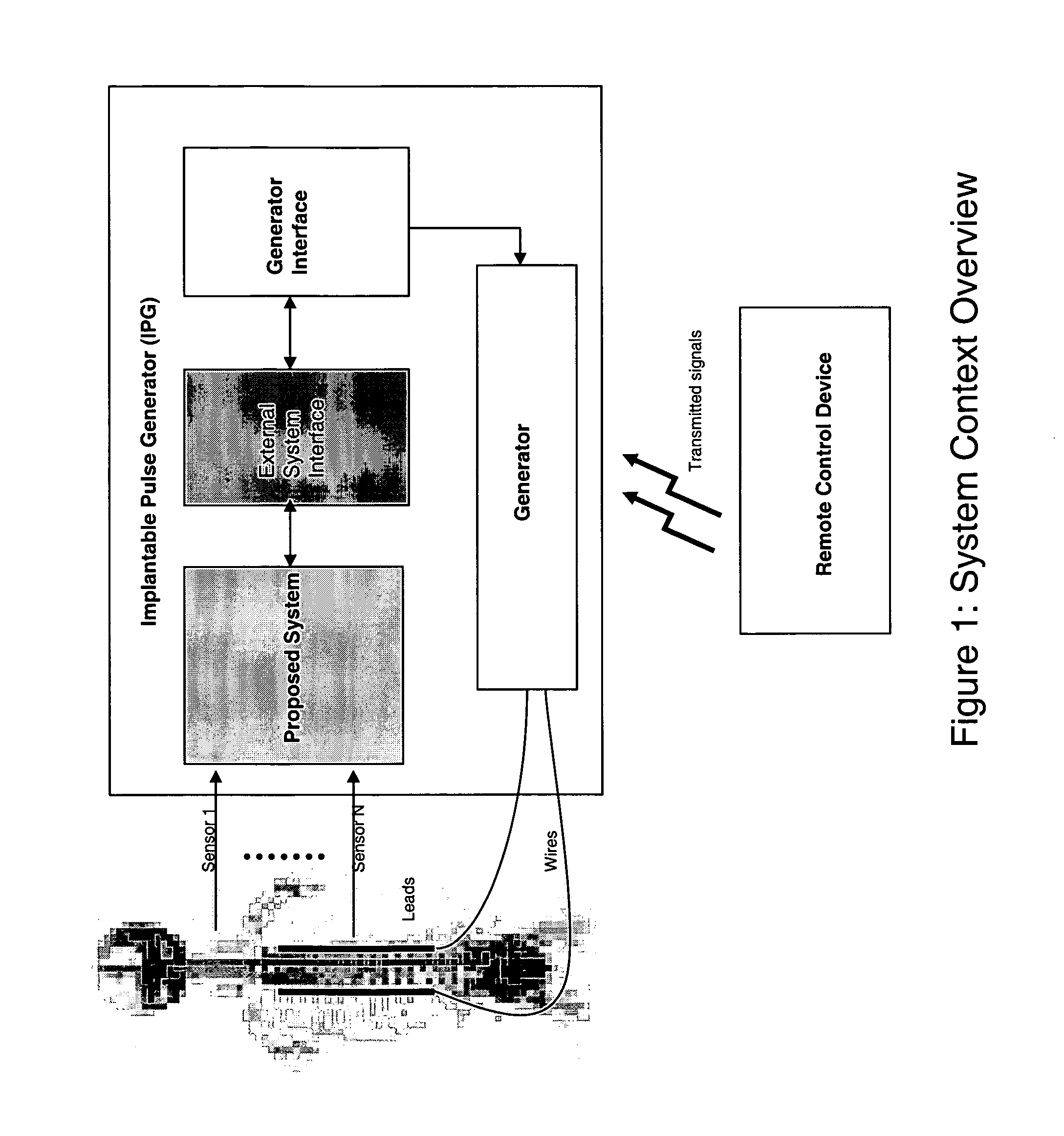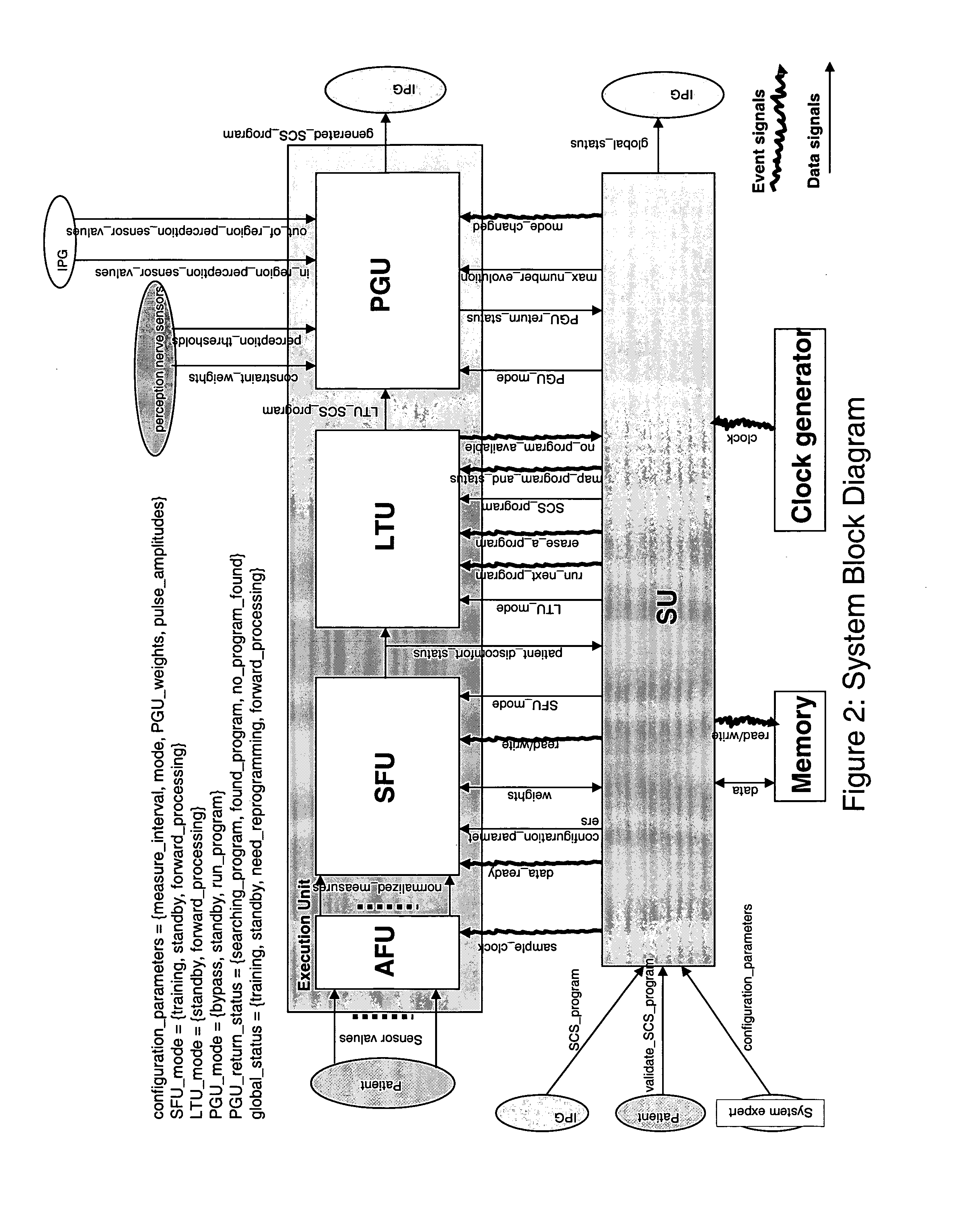This is very difficult to achieve.
Current SCS device technology is outdated, unintelligent, inconvenient, and inefficient.
Patient program settings are based on “
trial and error” approaches and patient “hunches.” Setting,
programming, and tuning SCS devices is largely manual, and is very
time consuming for physicians and patients alike.
Current SCS devices cannot adjust stimulation based upon real-time patient physiological parameters and changes.
The main drawback of such existing systems is that they do not contain any intelligence or facility to determine the most appropriate
electrode combinations (contact polarization) and electrical parameters.
This is currently done manually through a tedious and non-deterministic interactive process with the patient.
The whole procedure is very long, and very costly.
When the maximal bearable level of stimulation is reached, the patient may feel painful
muscle contractions.
No previous study has addressed the question of how
electrode location and contact configuration affect the
perception intensity of stimulation.
The primary reasons for this relatively primitive methodology for configuring SCS programs are:a) a lack of systematic research on the relationship between stimulus and
electrode parameters and their clinical effects;b) insufficient knowledge regarding both the neuronal elements in the spinal cord that are actually stimulated and the elements that have to be stimulated in order to obtain an adequate clinical effect.6 c) And, most importantly, prior to my invention, a complete lack of the required technology advanced enough to allow SCS devices to operate in an automatic, self-adaptive manner.
In the cases that are not covered by “rules”, when one uses a trial-and-error method, there are too many different options.
Simply trying them all is not possible.
Existing SCS devices have demonstrated several deficiencies, especially in terms of cost, convenience, and efficiency:a) First, it takes too long to determine the optimal set of stimuli to apply to the patient in relation to the large number of possible combinations.b) Second, each patient is required to visit a physician several times to adjust the system, which can become prohibitively expensive.c) Third, the selection of the appropriate program and the control of the
electric signal parameters—frequency, amplitude, and pulse width—must be done manually by the patient.
In summary, existing SCS devices are not intelligent, they are not self-learning, and they do not provide automatic feedback.
Existing SCS devices are not intelligent, self-learning, or automatic because none of the existing technologies which SCS devices utilize are advanced enough.
In fact, there are not even any new patents which purport or claim to automatically adjust a patient's pain treatment levels based upon automatic feedback from actual, specified, physical and / or physiological patient parameters.
This approach still does not contain any feedback from human physiological parameters as a result of the electrical stimulation.
Though this patent provides a method to efficiently program an SCS device via a
graphical user interface to generate quality stimulation to the patient, there is no automatic detection of pain levels and there is no automatic generation of corresponding appropriate stimulation programs.
However, this invention does not provide true intelligence since it does not understand whether the patient feels pain or not, and, hence, it cannot automatically trigger stimulation with the most appropriate program.
In addition, the stimulator is limited to coverage of a small region of the body.
The use of this device is limited to stimulation of a single nerve, and, therefore, is incapable of providing patients with the
broad spectrum and array of stimulation and
pain relief afforded by a spinal cord stimulator system.
Moreover, this invention would require several stimulators to be implanted to cover a larger region; hence, it requires much more complicated patient
surgery.
In addition, this competitor system cannot rapidly program the polarity of the electrode points.
Existing solutions or proposed patents still do not provide any intelligence, self-learning, or self-
adaptation to analyze the patient's pain conditions and generate the most appropriate SCS program.
Most important, no prior art has proposed a self-contained system that is capable of self-adapting (without human intervention), and changing its internal parameters automatically.
However, SCS devices can also be used for treating chronic intractable
angina (for which SCS therapy is used in Europe, but not used much in the USA),
peripheral vascular disease,
obesity, and depression.
 Login to View More
Login to View More  Login to View More
Login to View More 


